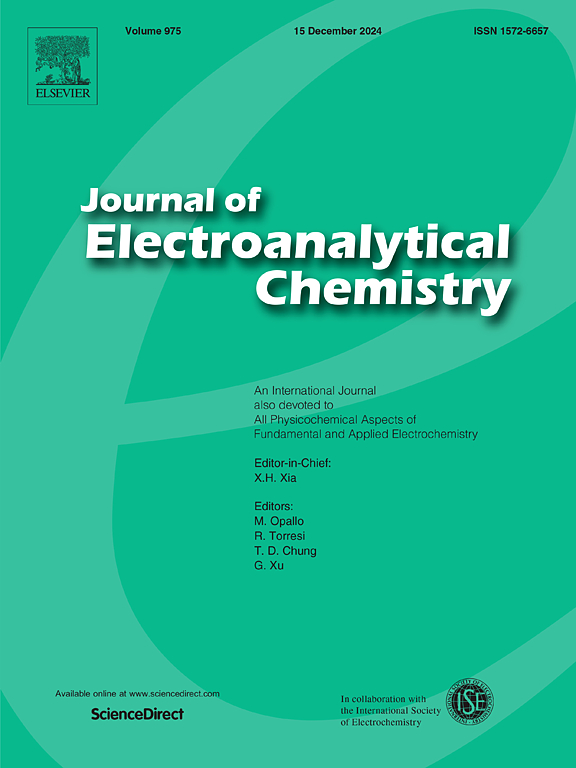An image analysis-based method to determine the vanadium electrolyte contents during the capacity recovery process with a facile chemical oxidation strategy
IF 4.1
3区 化学
Q1 CHEMISTRY, ANALYTICAL
引用次数: 0
Abstract
Repairing and regenerating the unbalanced electrolytes is critical for the long-term operation of vanadium redox flow batteries (VRFBs). In this work, we propose a simple strategy to repair the unbalanced electrolytes for capacity recovery through chemical oxidation with the V(V) electrolyte and develop a method based on image analysis to obtain the electrolytes’ V(IV) ion contents. When the V(V) electrolyte with the same concentration as that of the unbalanced electrolyte is added to the unbalanced electrolyte, V(V) ions gradually oxidize V(III) ions to V(IV) ions, and the color of the electrolyte changes significantly. By extracting the RGB information of the electrolyte image, it is found that the B channel value presents the highest sensitivity to the V(IV) ion content. Thus, the relationship between them is fitted, and the R2 of the fitted curve reaches 0.9978. Furthermore, the image analysis-based method is applied to predict the V(V) electrolyte volumes needed to repair the unbalanced electrolytes. Results show that the deviation of the B channel values between the recovered and standard V(IV) electrolytes is within 5%, demonstrating the effectiveness of the proposed repair strategy and image analysis-based method, which show great promise for practical VRFB applications.

求助全文
约1分钟内获得全文
求助全文
来源期刊
CiteScore
7.80
自引率
6.70%
发文量
912
审稿时长
2.4 months
期刊介绍:
The Journal of Electroanalytical Chemistry is the foremost international journal devoted to the interdisciplinary subject of electrochemistry in all its aspects, theoretical as well as applied.
Electrochemistry is a wide ranging area that is in a state of continuous evolution. Rather than compiling a long list of topics covered by the Journal, the editors would like to draw particular attention to the key issues of novelty, topicality and quality. Papers should present new and interesting electrochemical science in a way that is accessible to the reader. The presentation and discussion should be at a level that is consistent with the international status of the Journal. Reports describing the application of well-established techniques to problems that are essentially technical will not be accepted. Similarly, papers that report observations but fail to provide adequate interpretation will be rejected by the Editors. Papers dealing with technical electrochemistry should be submitted to other specialist journals unless the authors can show that their work provides substantially new insights into electrochemical processes.

 求助内容:
求助内容: 应助结果提醒方式:
应助结果提醒方式:


